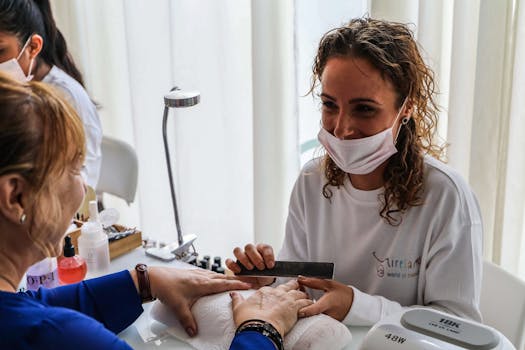The concept of the silicone breast has become increasingly popular for individuals considering breast augmentation or reconstruction. Silicone implants are used to create an artificial breast shape that closely mimics the natural look and feel of breast tissue. They offer a solution for those seeking enhancement or reconstruction after surgery. Silicone breasts are often chosen due to their realistic texture and flexibility compared to other types of breast prosthetics.
Understanding Silicone Breast
Silicone breasts, widely known as silicone boob or silicone tits, are primarily used in breast augmentation and reconstructive surgeries. The goal is to enhance or restore the chest’s appearance, which can be particularly beneficial for people who have undergone mastectomies or other surgeries. The silicone material allows for a smoother, more natural appearance, closely resembling the look and feel of natural breast tissue.
How Are Silicone Breasts Made?
Silicone breasts are composed of a silicone outer shell filled with a cohesive gel. This gel is thick enough to maintain its shape while still being pliable. The manufacturing process ensures that each implant meets stringent safety and quality standards. Over the years, advancements in technology have led to improvements in the design, making them more durable and real-life like.
Who Might Opt for Silicone Breasts?
Individuals who might opt for silicone breasts include those seeking reconstructive surgery due to cancer treatment or trauma, as well as those seeking cosmetic enhancements. Silicone implants are also a consideration for individuals desiring breast fake appearances for aesthetic reasons. The decision to undergo such surgery should be made in consultation with a certified medical professional who can offer guidance based on individual needs and health conditions.
The Procedure: What to Expect
The surgical process for inserting silicone breasts typically involves creating an incision under the breast tissue or along the areola. The implants are inserted either under the chest muscle or directly behind the breast tissue. It’s a procedure that requires a significant amount of skill, emphasizing the importance of selecting a qualified surgeon.
Recovery from the surgery can vary, but most individuals can expect a few weeks of downtime. Following the surgeon’s post-operative care instructions is crucial to ensure proper healing and the best possible results.
Benefits of Silicone Breasts
Silicone implants are often preferred due to their ability to provide more natural-looking results compared to saline or other alternatives. The material’s softness gives it an edge in mimicking natural breast tissue, making it more comfortable for many individuals in day-to-day activities. Additionally, silicone implants are less likely to wrinkle or ripple under the skin.
Potential Risks and Considerations
While silicone breasts offer several benefits, potential risks and considerations should not be overlooked. Complications can include infection, implant rupture, or capsular contracture, where scar tissue forms around the implant, leading to discomfort and distortion of the breast shape.
It’s essential for individuals considering this procedure to have a thorough discussion with their healthcare provider, understanding both the benefits and the risks. Regular monitoring through follow-up appointments is advised to ensure the implants’ integrity and one’s health.
Choosing the Right Path
For those contemplating breast augmentation, exploring the various options and making an informed decision is crucial. While silicone breasts are frequently chosen for their natural appearance and feel, they are part of a broader spectrum of cosmetic solutions available. Consulting with a trusted medical professional is a vital step in this process.
For those interested in broader aesthetics and self-care options beyond surgical procedures, exploring eco-friendly skincare practices and sustainable products can complement any personal aesthetic journey.
For more comprehensive information on this topic, including details about types and usage, visit this Wikipedia page on breast implants.
Takeaways
- Silicone breasts are popular for their natural look and feel.
- They are used for both cosmetic enhancement and reconstruction.
- Choosing a qualified, experienced surgeon is crucial.
- Understanding potential risks before surgery is important.
- Consultation with a clinician is essential for informed decisions.
Frequently Asked Questions
What exactly is a silicone breast implant?
A silicone breast implant is a prosthetic device used to enhance or reconstruct the breast, filled with a cohesive silicone gel that mimics the texture of natural breast tissue.
Are silicone breasts safe?
Silicone breasts are considered safe when performed by a qualified surgeon and when patients adhere to post-operative care guidelines. All surgical procedures carry risks, which should be discussed with a healthcare provider.
How long do silicone implants last?
While silicone implants do not have an expiration date, they typically last between 10 to 20 years. Regular check-ups are recommended to monitor the implants’ condition.
What are the differences between silicone and saline implants?
Silicone implants contain a cohesive gel, offering a more natural look and feel, while saline implants are filled with sterile salt water and may feel less natural. The choice depends on personal preference and medical advice.
Will silicone breasts affect my ability to breastfeed?
Breastfeeding with silicone implants is possible for many women, but it can depend on the incision type and placement of the implants. Discussing this topic with a healthcare provider is important when planning surgery.






